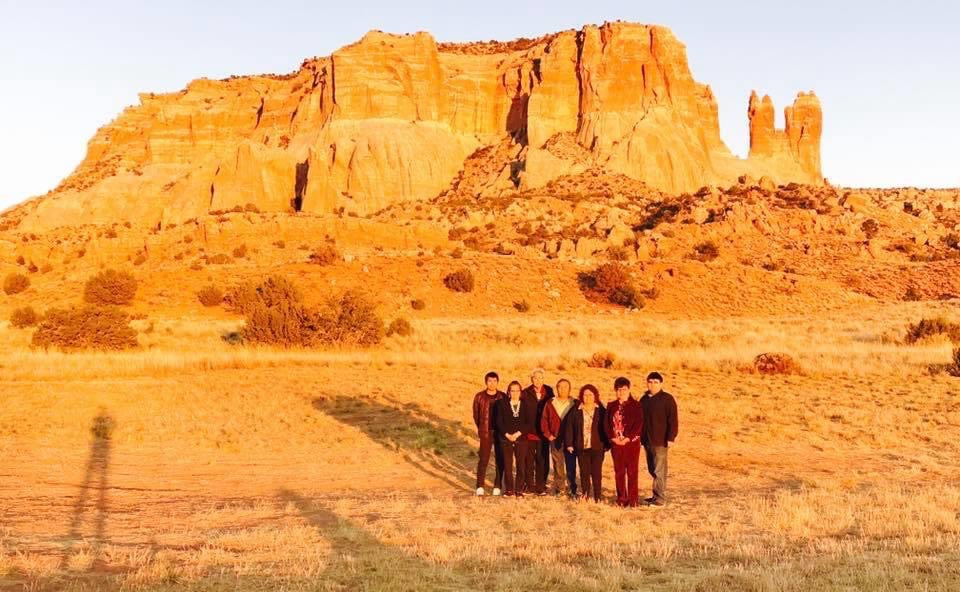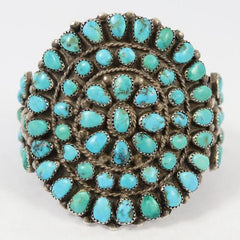Zuni: The Finest Lapidary Artists of the Southwest

The Zuni Pueblo is nestled in a striking landscape of majestic mesas and diverse desert habitat, approximately 34 miles south of Gallup, New Mexico. The Zuni people have inhabited this land for thousands of years, and today, the tribe is home to more than 10,000 members. Traditionally, Zuni society is organized around a matrilineal clan system and a rich ceremonial life that honors ancestral connections and the deep spiritual bond with their homeland. Cultural traditions are expressed in many forms, especially through art. Zuni artisans are renowned for their pottery, fetish carvings, and distinctive jewelry.
Jewelry, in particular, is one of Zuni's most recognizable art forms. The Zuni have been creating jewelry for over a thousand years, but in the 20th century, their innovation and craftsmanship set a standard for Native American jewelry-making. Zuni silversmiths are celebrated for their mastery of lapidary work, and the influence of their work can be seen throughout the Southwest. Distinctive styles such as needlepoint and petit point, featuring tiny, precisely set stones in intricate patterns, is a hallmark of Zuni artistry. Zuni has also produced some of the world’s finest inlay jewelry. Below we explore various expressions of lapidary art by the Zuni tribe.
Fetish Carvings

Zuni fetishes are an ancient art form where animals are carved from shell, turquoise, and other stones. Fetishes are part of Zuni spiritual tradition and believed to bring blessings such as good health, abundant crops, or successful hunting. The Zuni believe that the animal shares some of its traits with the bearer of a fetish carving. Each Zuni fetish animal has a different meaning and is used for different purposes. Originally the fetishes were stones that naturally resembled an animal, and over time the carving became more intricate to bring the animal to life in the stone. This practice laid the foundation for Zunis to become exceptional lapidary jewelry artists. Read here for common Zuni fetish carvings and their meanings.
Fetish Jewelry

Cluster Jewelry

Metal-working in Southwest Native American tribes began with the arrival of the Spanish in the late 1800s, as they took small copper bells and coins traded from Mexico and forged them into jewelry. Soon the silver jewelry began to incorporate turquoise. The Zuni excelled at this stonework. They developed stunning jewelry with "clusters" of small needlepoint and petit point hand-cut stones. These pieces have become iconic examples of Southwest Native American Jewelry, and through their masterful jewelry-making, the Zuni led the way for other Southwest Native American jewelers.
Symbolic and Animal Inlay

Zuni artists soon became known as masters of lapidary inlay work as well. In addition to geometric inlay, Zuni inlay jewelry has depicted important cultural symbols, such as Rainbow God/Man, Knifewing God, Thunderbird, and Sunface.

Fine Zuni inlay work also is known for its realistic depiction of animals and nature. Dennis Edaakie was a highly regarded Zuni artist who made jewelry inspired by wildlife, and today, Quintin Quam makes intricate animal inlay jewelry. Countless other talented Zuni artists have brought animals to life in their jewelry as well, including, Rolanda Haloo - whose stunning birds are customer favorites.
Contemporary Inlay

We adore Colin Coonsis' mosaic inlay work that is a contemporary take on traditional Zuni inlay. Says Colin: "I sustain the belief that people today are influenced by a progressive society, and even Native American artists must adapt to progression with an open mind. As I collect experience, my work becomes ever more intricate, and detailed. The tradition of Zuni art remains, and through my jewelry, the traditional ideals that have influenced Native American art for nearly a century are preserved through the collective influences that I have derived from my predecessors."
Shop All Zuni Jewelry





Leave a comment